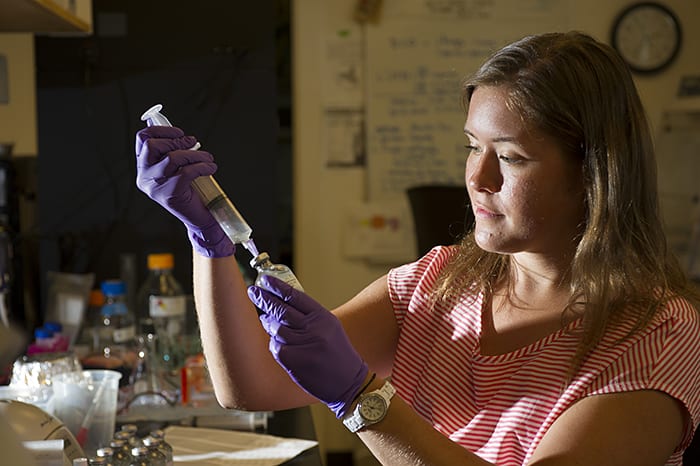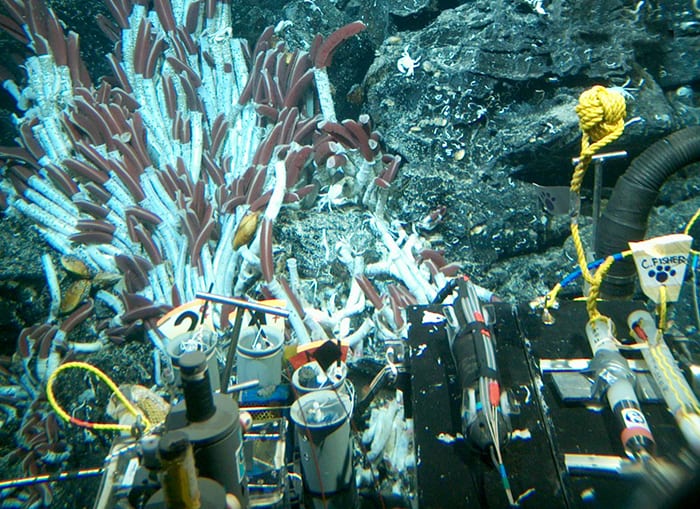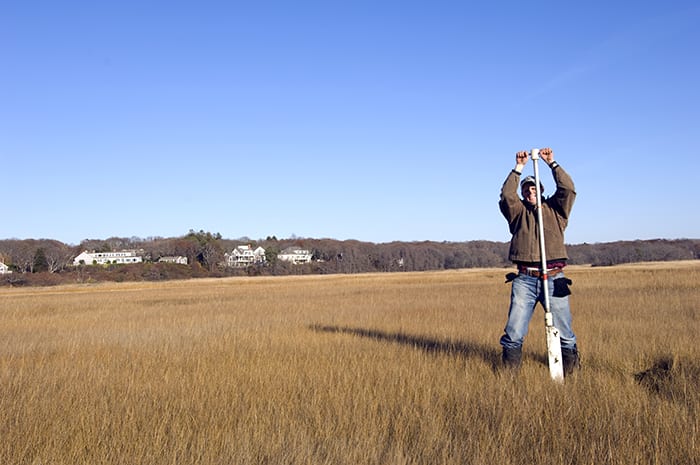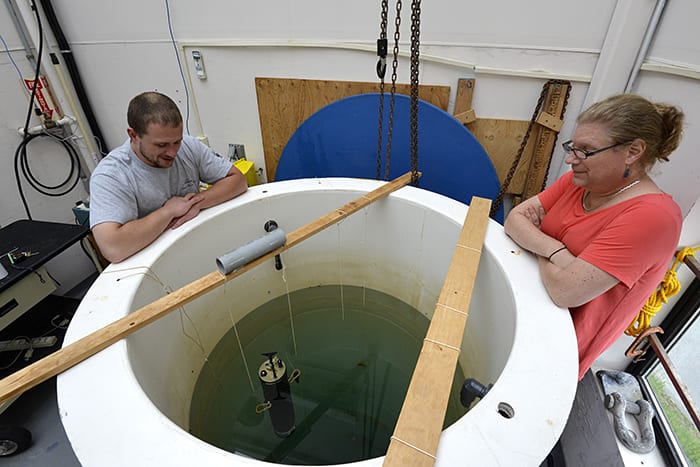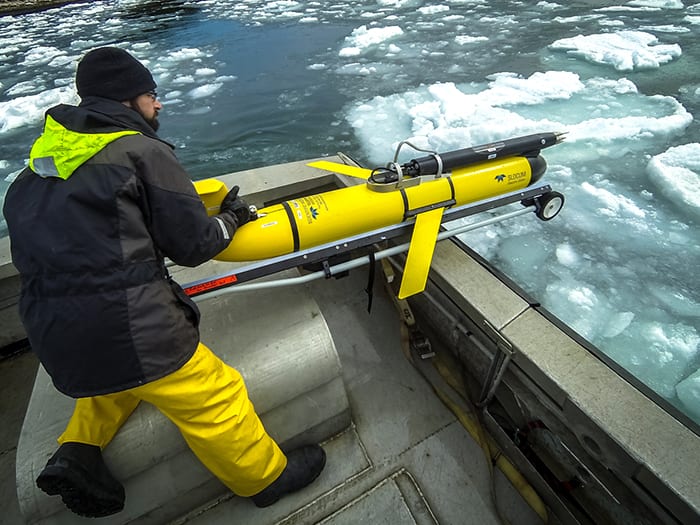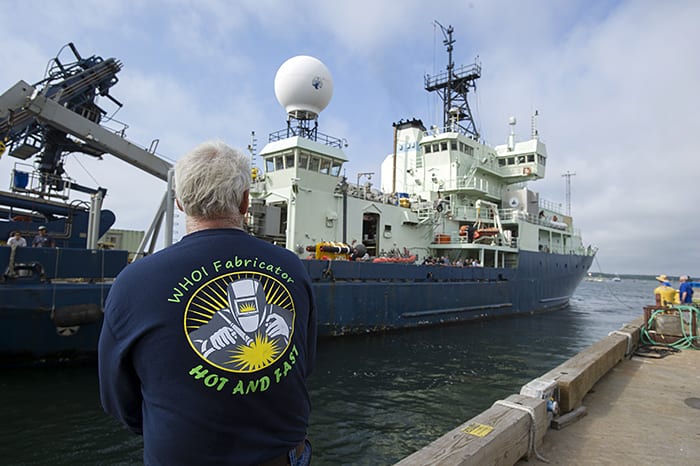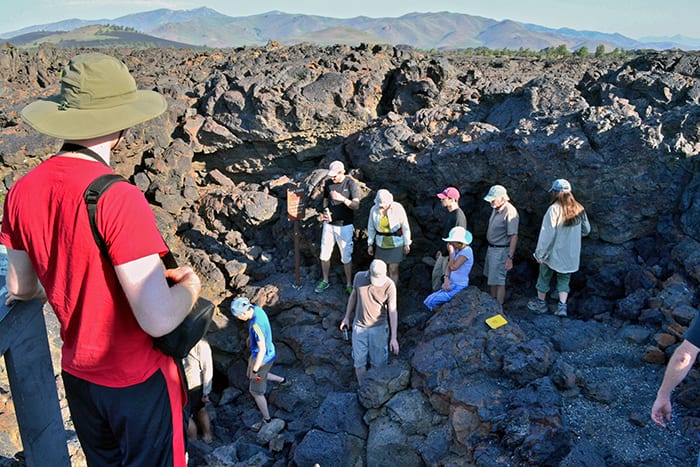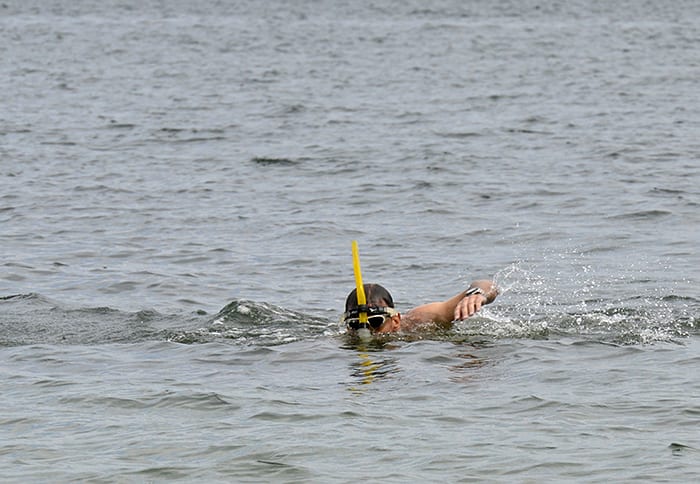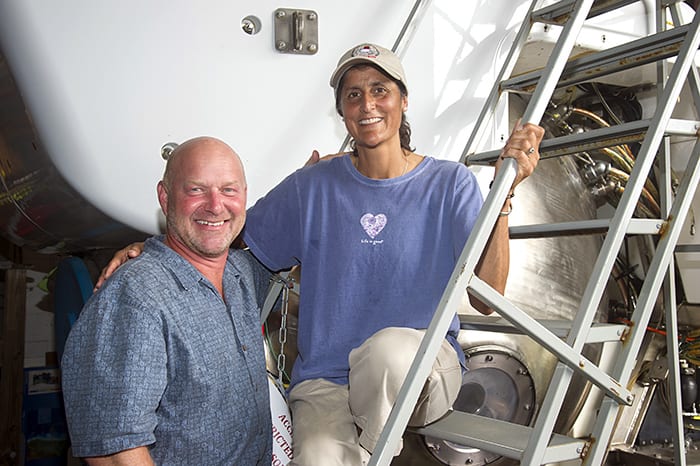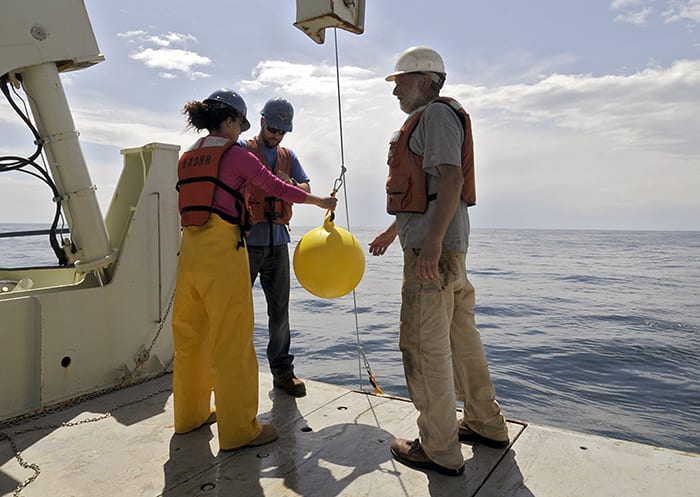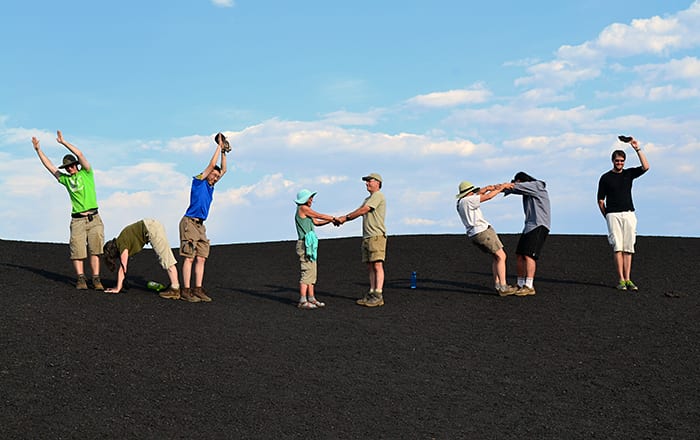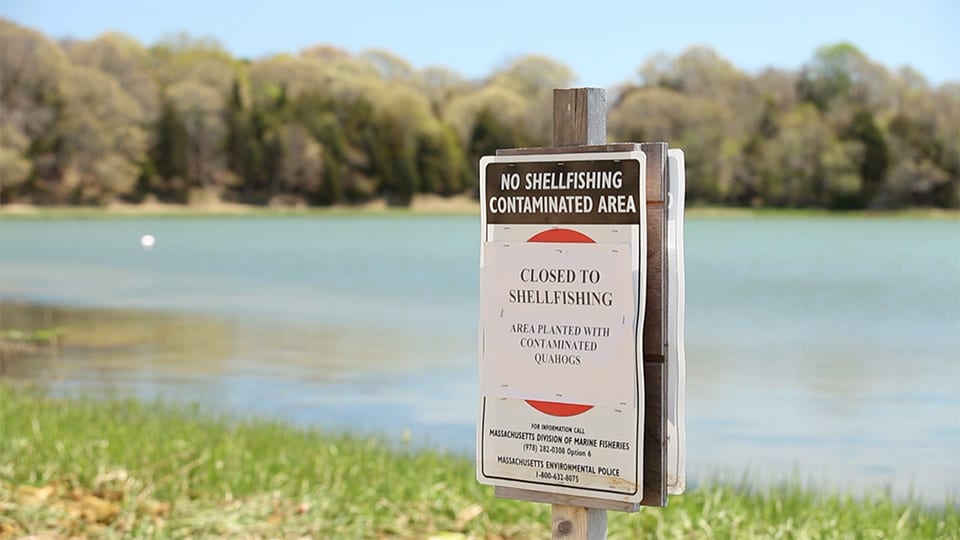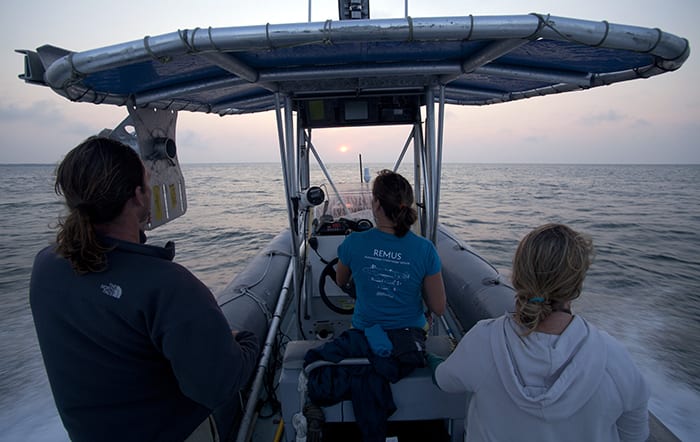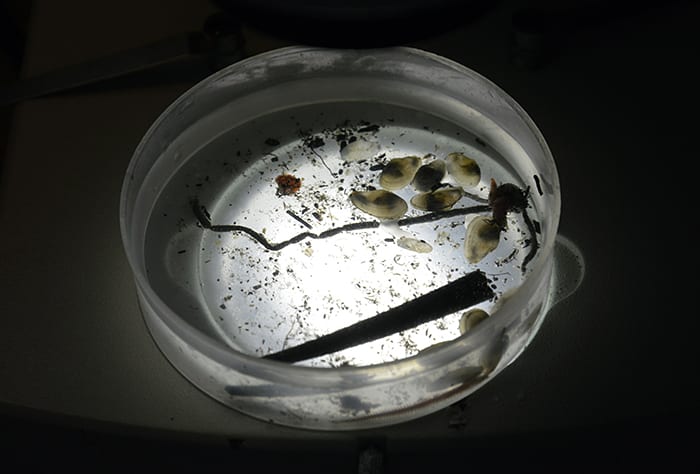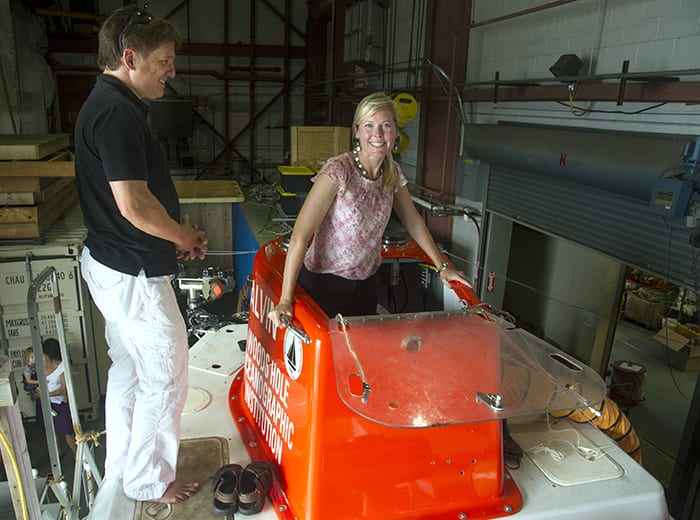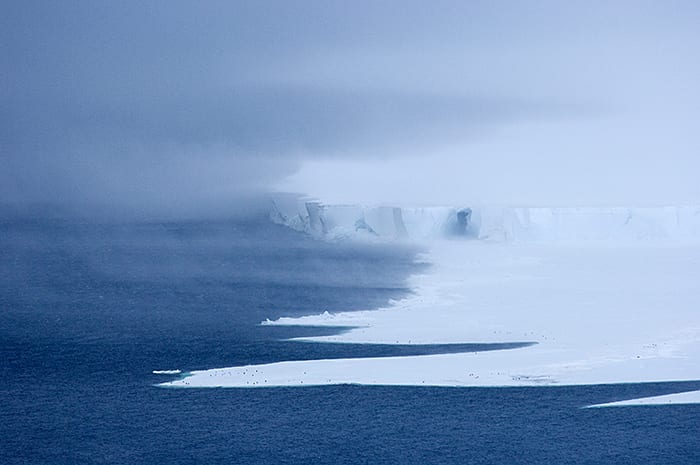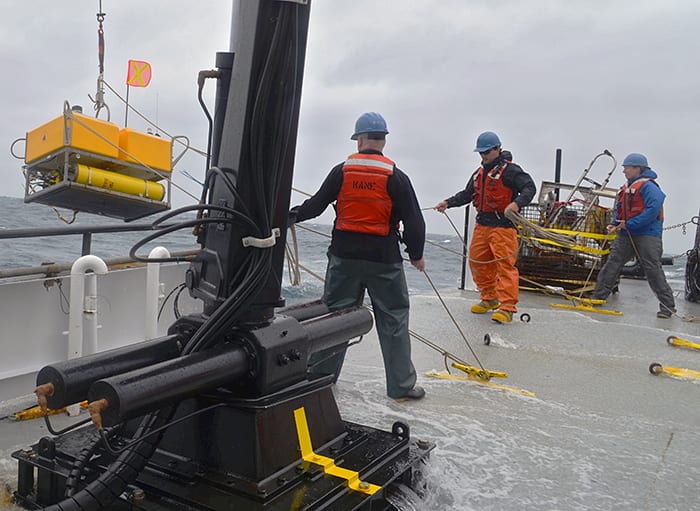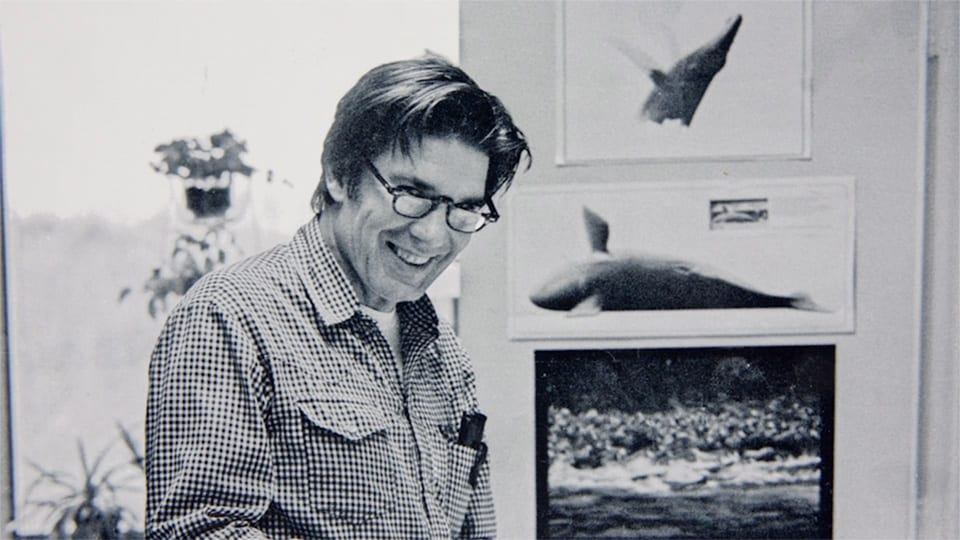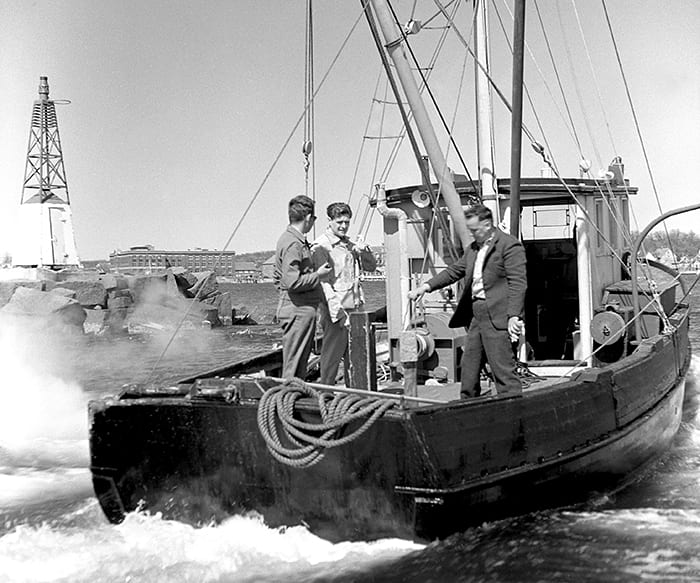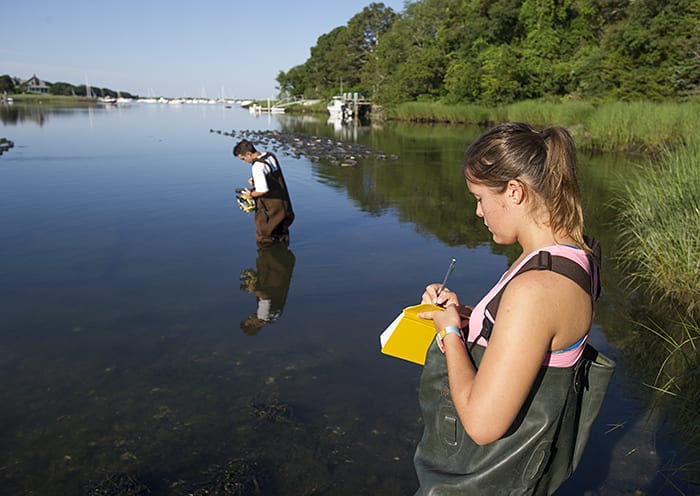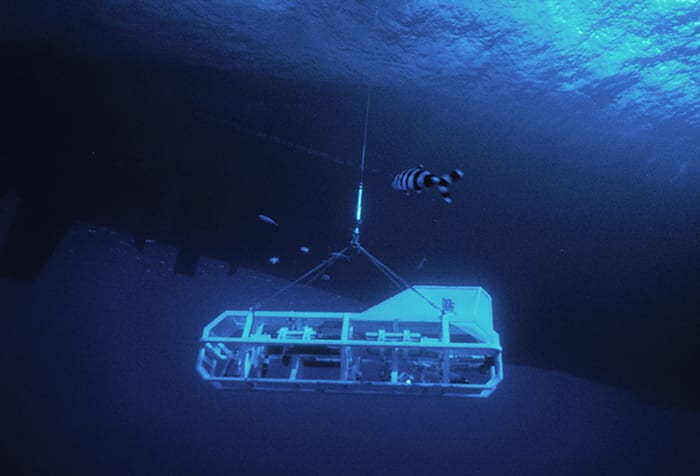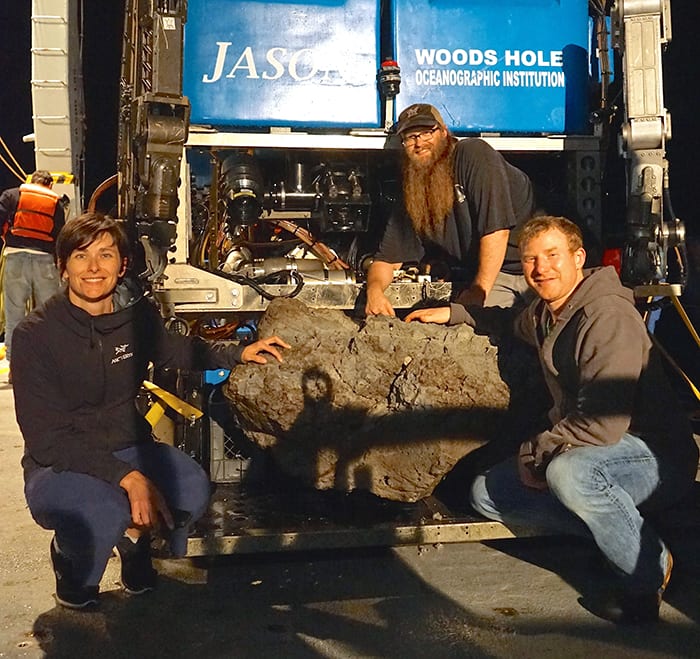Multimedia
Of Ocean and People
Stephanie Stefanski, a PhD student in marine resource economics at Duke University, took this stunning photograph of a breaching southern right whale during fieldwork at the Peninsula Valdes World Heritage…
Read MoreNatural Filters
Oysters are filter feeders that dine on free-living algae called phytoplankton by sucking in water over their gills. In the process, they also improve water quality by removing particles that contain…
Read MoreLife in the Shade
This picture of tubeworms was taken in the East Pacific Rise at a depth of 8,200 feet (2,500 meters) from the human occupied vehicle Alvin. Since the discovery of hydrothermal…
Read MoreFinding History
Columns of sediment known as cores taken from coastal ponds and marshes reveal layers of sand, silt, and other material deposited over the years, including during extreme storms and hurricanes . These…
Read MoreWatching and Waiting
Alex Ekholm and Pelle Robbins test the programming of a newly developed ALAMO (Air-launched Autonomous Micro Observer) profiling float in a test tank at WHOI. The floats are designed to be…
Read MoreCold Feat
Gliders are autonomous underwater vehicles that change pitch and buoyancy to generate forward motion, and carry instruments that gather data on physical, chemical or biological properties of the water. Their…
Read MoreHot and Fast
WHOI senior welder/fabricator Anthony DeLane watches R/V Atlantis backing into the dock. Fabricators work with WHOI scientists and engineers to construct the physical frameworks for instruments, including moorings, buoys, and prototypes of…
Read MoreLava Trail
WHOI graduate students and scientist explored a lava tube, a cave-like geological feature that channels lava away from eruption sites, during a field trip to Idaho’s Craters of the Moon…
Read MoreScience Practice
Long-distance swimmer Ben Lecomte visited WHOI in July to prepare for his attempt to swim across the Pacific Ocean later in 2015. He was here to learn how to collect…
Read MoreReunion on Dry Land
In 2007, WHOI marine biologist Tim Shank, diving in the submersible Alvin, made a call to NASA astronaut Sunita “Suni” Williams while she was orbiting the Earth in the International Space…
Read MoreGo Set a Sediment Trap
Bethanie Edwards, Justin Ossolinski and Peter Liarikos (left to right) prepare the float on a sediment trap for deployment from the R/V Knorr. While steaming from Woods Hole to St.…
Read MoreCoral Clouds
WHOI senior scientist Konrad Hughen swims through dense clouds of bluestreak fusiliers in the Chagos Marine Reserve, the world’s largest no-take marine reserve. The Khaled bin Sultan Living Oceans Foundation’s…
Read MoreShowing WHOI Are
A group of faculty and students on a trip to a lava field in Idaho’s Craters of the Moon National Monument created a human “WHOI” choreographed by former postdoctoral investigator…
Read MoreSetting a Watchman for Harmful Algal Blooms
New undersea technology offers ways to monitor toxic outbreaks.
Read MoreEarly to Rise
A team that included Mike Dodge, WHOI engineer Amy Kukulya, and NOAA Northeast Fisheries Science Center biologist Kara Dodge (left to right) headed out of Woods Hole at sunrise recently…
Read MoreLife in Seafloor Mud
A petri dish holds seafloor sediment from Buzzards Bay, Mass. Each year WHOI Summer Student Fellows spend a day aboard R/V Tioga learning about oceanographic instruments and sampling. This year’s…
Read MoreHitting a High Note
Boston Pops Conductor Keith Lockhart watches as his wife, Emiley Z. Lockhart, climbs into HOV Alvin during a tour last month. The couple visited WHOI with their friend, NASA astronaut Sunita…
Read MoreSouthern Snow Blowers
In Antarctica, fierce winds blow plumes of snow out to sea, obscuring most of the 400 mile-long Ross Ice Shelf, Antarctica’s largest ice shelf. As the global climate warms, polar…
Read MoreDistant Rumblings
Recent seismic activity along the Cascadia Subduction Zone has renewed attention on the hazard it poses to residents from Vancouver to Portland. The Ocean Bottom Seismograph Instrument Pool which includes researchers from…
Read MoreThe Man Who Opened Our Ears to the Ocean
Historic archive of marine mammal recordings established.
Read MoreProud Lineage
Since its beginning, WHOI has maintained a vessel used by researchers to study the coastal ocean or to test equipment in local waters. Today, that job is held by R/V Tioga…
Read MoreToo Much of a Good Thing
Summer Student Fellow Claudia Mazur, of Mount Holyoke College (foreground), together with WHOI guest student Alec Cobban sampled sediments under oyster aquaculture sites in West Falmouth Harbor this summer. Both were working in WHOI…
Read MoreArgo and Titanic
Thirty years ago today, a group of scientists, engineers, and technicians aboard the research vessel Knorr discovered the final resting place of RMS Titanic. The team found the wreck with…
Read MorePumice Puzzle
On July 31, 2012, a passenger on a commercial airliner spotted what appeared to a large raft of pumice in the Pacific Ocean. Satellite imagery revealed the likely source—the Havre…
Read More

